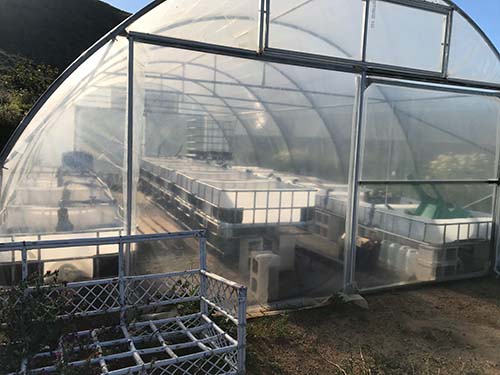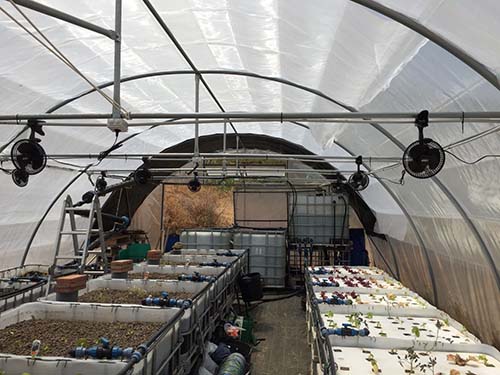
Projects Detail
60 m2 Showroom
Who?
What?
When ?
Energy consumption : 500 watts/hour
Water Consumption : 25 ltrs/day
Total Grow Area : 20 sqm
Design : Lorraine Hodges
By betting on simplicity in design, making use of the space under the greenhouse, and maximizing the performance of the energy grid, we achieved facilities where groups of all levels could become familiar with and learn about plant and fish cultivation through aquaponics with an interdisciplinary approach that integrates learning in sustainability, nature conservation, and the market.
The goal was to create facilities that would allow the flow of people in groups of 20, where they could listen and learn about aquaponics accompanied by a guide. The crops would be located at a height of 60 cm from the ground, an optimal height for students over 10 years old. The entire installation should be thought out and designed without dangerous moving parts, without obstacles, and with 80 cm aisles where everything could be touched without damaging the aquaponics system. The design would be based on IBCs that have already proven to be versatile, durable, and safe in other sectors.
During 3 years of operation, we received hundreds of visits, cultivated and experimented with a wide variety of products, harvested and ate fish until we were tired, became self-sufficient with our own seeds, reproduced our own fish, and generated our own energy. Once the system was up and running, it behaved like a living entity with its own patterns and rhythms. A full-fledged ecosystem where we generated 0% waste, used 0% pesticides, and all with the same water in constant circulation.
What We Did ?
In order to gain a comprehensive understanding of the real-world challenges, we immersed ourselves in the perspective of a local farmer aspiring to venture into aquaponics. This approach allowed us to grasp the intricacies of the situation firsthand. Starting from this vantage point, we diligently identified the most suitable land within our means, meticulously crafted the project using traditional pen and paper methods, and prioritized the principles of Reuse, Revive, and Revitalize (RRR) while sourcing the necessary components. Additionally, we engaged in productive discussions with local authorities to ensure compliance with regulations. Armed with this knowledge and groundwork, we enthusiastically dove into the project, embracing the learning process that unfolded, which revealed invaluable insights regarding the advantages, drawbacks, challenges, and corresponding solutions.








